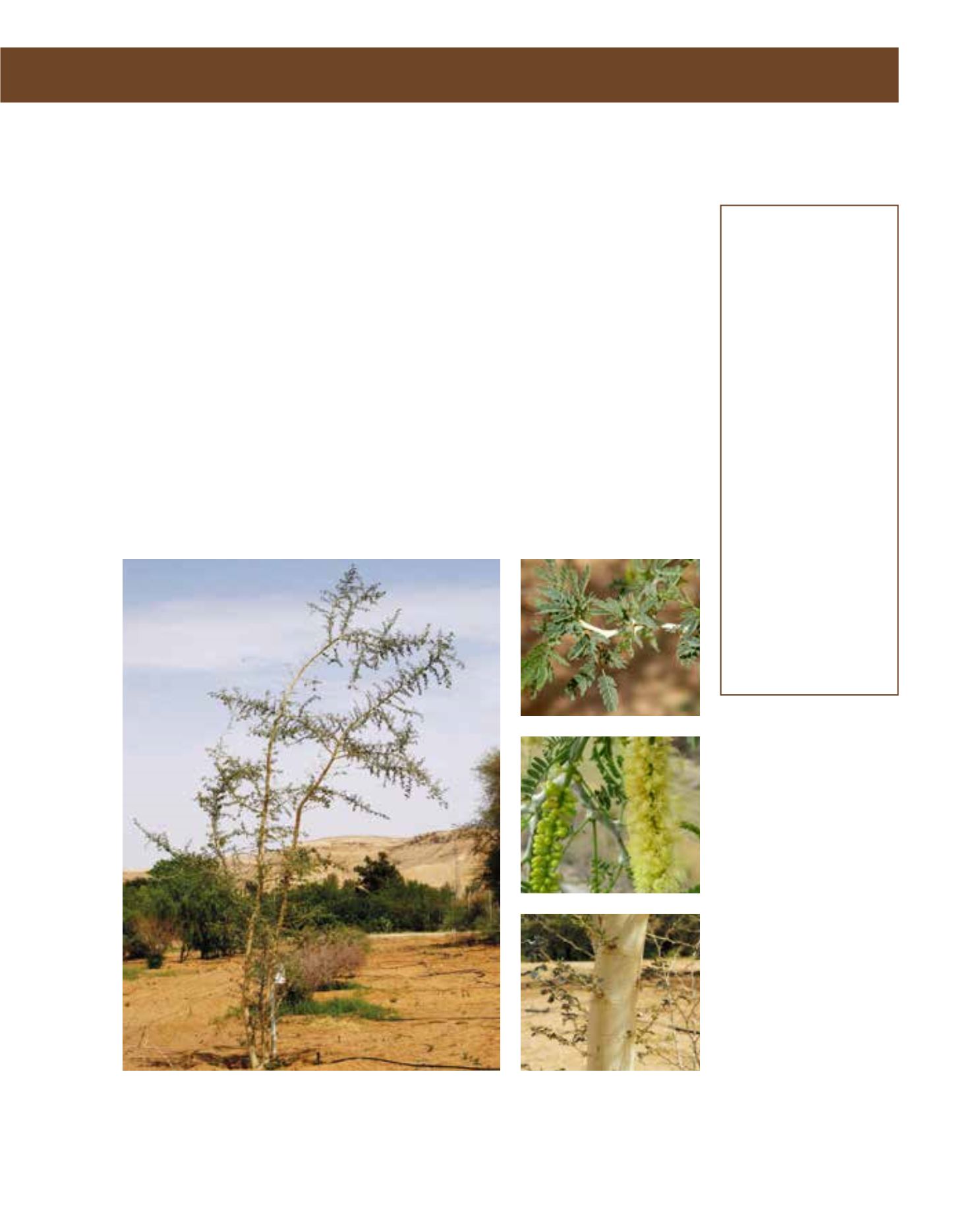

GENERAL
Origin
:
tropical
Humidity
:
very arid, semi-
arid, semi-humid
Propagation :
direct sowing
Maintenance :
low
CONDITIONS
Urban climate :
vulnerable
Dessication :
resistant
Stagnant water :
resistant
Irrigation
:
none
Salinity/ppm :
moderate (1800
ppm)
Hardiness
:
0°C
SHAPE
Type
:
tree
Height
:
15 m-25 m
Spread
:
10 m-14 m
Foliage
:
deciduous
FLOWER
Colour
:
yellow
Size
:
10 cm
Period
:
May - June
Smell
:
flower
FRUIT
Type of fruit :
pod
Fruit size
:
30 cm
The Ana Tree, formerly known as Acacia albida, and in Arabic as harraz, is native to Africa and
introduced into the Middle East, India and Pakistan. It is a large, very thorny, deciduous tree
reaching 30 metres in height in its native habitats on floodplains and dry watercourses. A fast-
growing tree with a thick trunk and zigzag branching habit, the pale grey-green leaves are borne
on whitish-grey, smooth stems and branches when young, which become grey and rough when
older. The straight, whitish thorns are up to 40 mm long. The bark is grey, and fissured when
old. Scented, pale cream-coloured flowers in long spikes occur from March to September, and
are followed by large, unusually twisted, fruit pods, bright orange in colour. F. albida has a deep
tap root, making it very drought-resistant, and it will grow in waterlogged soils and withstand
occasional frost. For propagation, its seeds should first be treated with boiling water overnight
before sowing. Young plants develop long tap roots and should be planted in the ground quickly.
The tree is particularly useful in nitrogen fixation and erosion control, and is highly valued in
agroforestry. It also has medicinal properties in the treatment of infections. Susceptible to mea-
lybugs and scale, it can be treated with systemic insecticides. Large areas of the Sahara in Niger
have been re-afforested with the Ana Tree, with great success. With its white twigs and thorns, it
is an interesting specimen tree in a park or large garden with only low maintenance requirements.
142
Faidherbia albida,
Mimosaceae
Apple-Ring Acacia,
Ana Tree, harraz
















